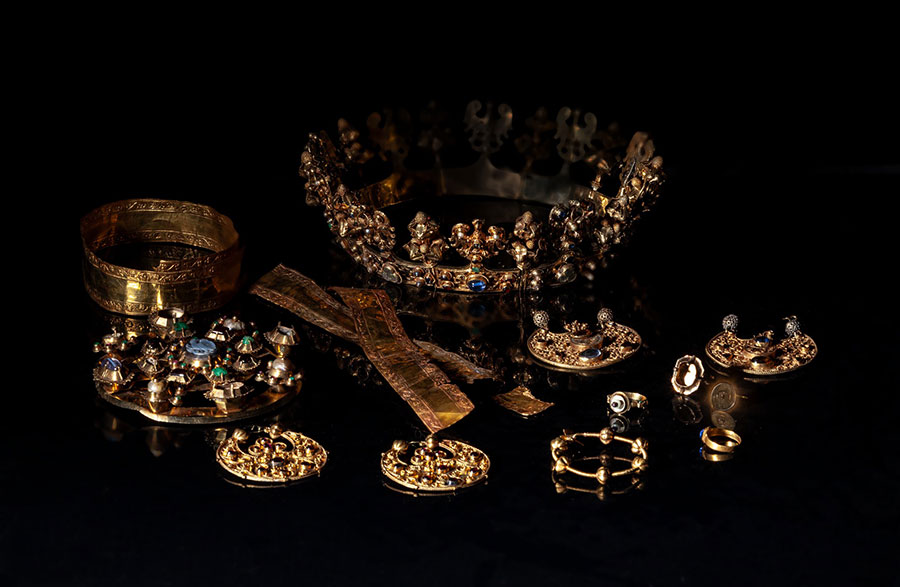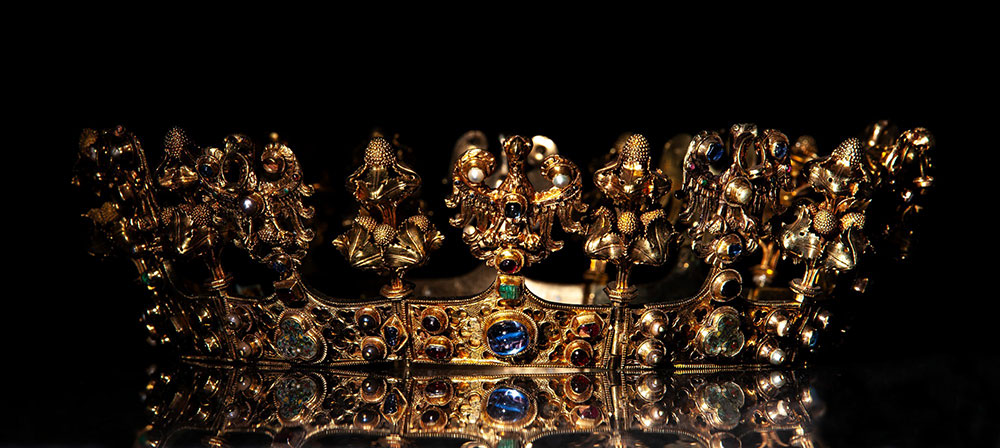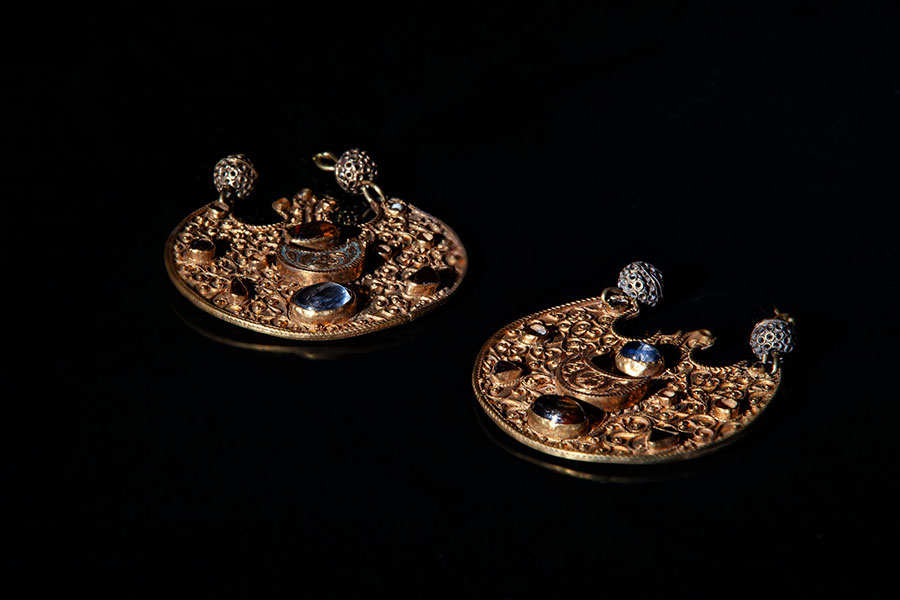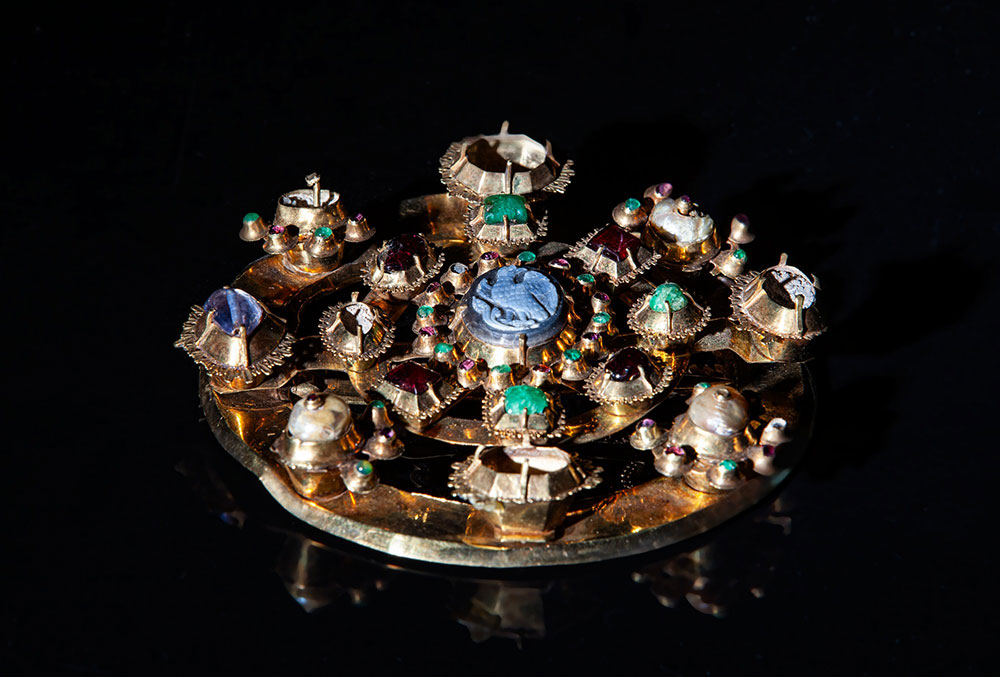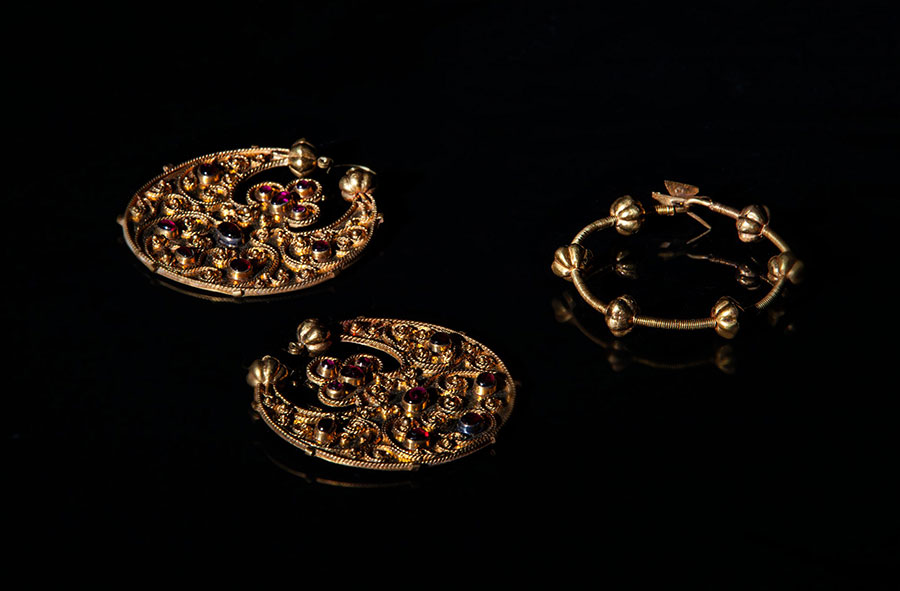1 October – 29 December 2024
Fot. A. Podstawka
Curator of the exhibition: Jacek Witecki
The Środa Treasure, found by accident in 1988 in the town of Środa Śląska during building works, has remained one of the most unusual doscoveries of the 20th cent.
The legends and myths surrounding this find are the theme of this year’s presentation of the Środa Treasure at the National Museum in Wrocław. This collection of unique medieval royal and imperial gems, most likely originated from the treasury of the Czech king Charles IV and served as collateral for a loan, was hidden around the mid-14th-cent. and remained a secret for the next 600 years.
“The unusual circumstances surrounding its discovery, as well as its enormous value, meant that it caused a public sensation, producing widespread discussions, enquiries and speculation” – explains Jacek Witecki, curator of the exhibition. “The research centred on the Środa Treasure has been accompanied for many years by new theories, legends and a particular »mythology«, which in itself is a fascinating subject in the area of culture and history. This in fact is the letmotif of the current exhibition, showcasing not only the actual artefacts – including the royal wedding crown – but also documents, press clippings, reports and photographs”.
To quote Piotr Oszczanowski, Director of the National Museum in Wrocław: “This mysterious and most unusual collection of gems and goldsmithery could easily become the pride and joy of any important museum around the world, a priceless artefact linked to great historic figures, which probably embelished the most beautiful women of the Middle Ages, is mesmerising and simply… spectacular. The Środa Treasure means all this, and in line with the tradition of many years, it is now returning to the National Museum in Wrocław, enabling us to enjoy its beauty right to the end of this calendar year”.
Historical artefacts from the Środa Treasure
The crown is the most valuable part of the Środa Treasure. It is a woman’s crown commissioned on the occasion of a wedding, which is clearly indicated by the rings motif – a sign of marital commitment and symbol of a good omen.
The crown belonged to the Czech queens, and its last owner could have been Blanka (Blanche) de Valois, the first wife of Charles IV of Luxembourg.
This priceless piece was created in the early 14th cent. It is the only surviving medieval crown of this kind, and its exceptional value is further augmented by the supreme craftsmanship of the goldsmith.
The second most valuable piece of jewelry is a round clasp, decorated in the centre with a chalcedony cameo depicting the imperial eagle. Around the cameo and along the inner ring of the clasp precious stones – garnets and emeralds – are set, while the outer ring retains a sapphire and pearls circled by garlands of emeralds and garnets. Such clasps were used to fasten ceremonial cloaks of courtiers as well as the coronation and liturgical robes.
Other exhibits on display are the gold pendants dating from the late 12th cent. and the 13th cent., used to adorn women’s heads (decorated with filigree as well sapphires, citrines, garnets and pearls), a buckle with a bird figurine, gold rings, ornamental strips used as edging for precious objects, as well as gold and silver coins.
The place and probable time of hiding these precious objects – before the mid-14th cent. – and the character of the jewels allow us to speculate that they constituted a bank collateral which had originated from Prague, from the Crown Treasury of the House of Luxembourg. The valuables found their way to Silesia, which was then part of the Czech Crown, during the rule of Charles IV. It has been known that the King borrowed heavily from the rich merchants of Środa Śląska in order to finance his political campaign to obtain the imperial title.
The treasure was placed in the collection of the National Museum in Wrocław, and was first shown to the public in 1996. The Środa Treasure is exhibited annually in the National Museum in Wrocław during the last three months of the year, and for the remaining nine months it can be viewed in the Regional Museum in Środa Śląska.
